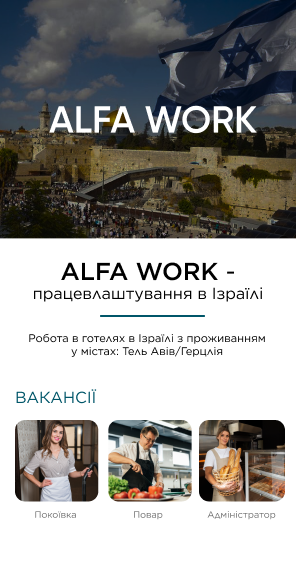





Oxytec distributes and installs equipment for cleaning, disinfection and sterilization of water, air, various surfaces.
The Client's advantage is that he has a wide range of purification systems and filters. There are also international branches in 8 European countries: Austria, Belgium and the Netherlands, Germany, Czech Republic, Italy, Sri Lanka, Bulgaria and headquarters in Switzerland.
Cleaning systems for industrial premises can clean the air, get rid of odors and soot deposits both in the kitchen in the house and in the food production premises. The Client also provides plasma-based air pollution control systems.
In this case, we will tell you about how search engine optimization provides it with a monthly increase in users coming from organic search.
The Client has already come to us with a ready-made website filled with unoptimized texts, empty or irrelevant meta tags and multiple technical problems.
We define an individual plan for each new project. In the first month, it was decided to carry out the following work:
- technical analysis, website usability analysis;
- filing of recommendations for errors correction;
- analysis of competitors and niches;
- study and collection of the semantic core;
- query clustering;
- preparation of technical specifications for writing optimized content;
- compilation and placement of metadata for the priority pages of the website, etc.
1. Website analysis and recommendations for improvement
The user expects to find the answer to his question by going onto the website from Search. The content must fully satisfy the information needs and be expert. If so, it is likely that the user will not be limited to viewing just one page. To achieve this level of engagement, the resource must be easy to navigate, have a structured menu, and provide links to other articles of the same portal in the texts.
We conducted a technical audit during SEO. Errors that we have identified are subject to correction:
- URL of the page with a capital letter. This factor does not affect the ranking of site pages directly. However, the URL is case sensitive and pages with the same name (eg /HOME and /home) will be ranked not by the customer, but by Google. Visitors can close the website because of such duplicates. Especially if the content of such pages is different.
- Optimization of pagination pages. Pagination is the division of all website content into categories, subcategories and other logical blocks using numbering, alphabet at the bottom of the content page.

Fig. 1 — This is how pagination is implemented on the Client's website
Pagination is needed to structure the content of the website. It simplifies the perception of information, since the content is given in portions, and not all at once. Imagine you have a huge scroll in your hands: until you unroll it all, it will become unwieldy and completely unreadable.
Now take a book, open it and look - isn't it easier to read, isn't it? The same works for the Internet. If the content is divided into subsections, this not only provides convenience but also improves the overall loading speed.
- Recommendations for robots.txt file. It tells search crawlers which pages can and cannot be crawled.
- Error 404. The Client’s website contained pages that could not be displayed or did not exist. They had to either be removed or their contents changed.
- Recommendations for changing content in the Title tags. It is used to form the title of a page in Search.
- Meta descriptions. A small description of the page content, from which the snippet is formed for display in Search. It is designed more for customers than for search engines. The data in the meta tags make it clear what information is waiting for the user on the page if he clicks on the link. Therefore, it makes no sense to write too abstrusely, write a text that is understandable for a person. Moreover, it is advisable to create unique descriptions, avoiding templates.
The optimal number of characters for meta description is no more than 160 characters.
- H1 tag. Contains the title of the page. There should only be one tag on each page containing a unique title. The presence of duplicates or the absence of a tag in the page code can lower the position.
- Micromarking and breadcrumbs. Micromarking helps search engines to better understand what your content is about and thereby increase its relevance. For a goods store, this is a rating, a price; for a book - author, rating, etc.; for the contact page - address, phone number. Breadcrumbs are needed so that the user can understand where he is now. They also allow you to go to the main menu/home page in 1-2 clicks.
- Download speed optimization. This task is always marked with priority "urgent". This is an important ranking factor for search engines: low page load speed significantly affects bounce rate. The optimal time is 2-3 seconds.
Following the recommendations, it will be possible to improve not only the performance of the website, but also to increase its search rankings, and, accordingly, traffic. You can try to do all this yourself, but this definitely requires experience or qualifications. Therefore, business owners turn to promotion agencies for recommendations and their implementation.
Search engine optimization takes place in stages. You won't be able to do all at once.
The Client needed to promote in 6 languages at a time, but our opinion is: don't try to move mountains, start with smaller goals, achieve results and implement work strategies as you progress.
So we agreed with the Client that we would first optimize the website for users from Italy, England and Germany until we get tangible results. And then for other languages.
The original plan of the Client was to conquer all of Europe, ideally without reference to geolocation. For example, with the help of the German version of the website, conquer all the countries of Europe where this language group is located (Germany, Austria, Switzerland, Liechtenstein, etc.). However, to get a return on investments in SEO not in a year, but earlier, you need to link to geolocation (indicate the country in the metadata, have a representative office in a specific country, etc.).
2. Building a semantic core
Each website provides some kind of content created for people to satisfy their search query. The text should be structured and understandable. The subject of the articles must coincide with the subject of the project.
Content for search engines to find must be:
- expert. Text written by a specialist in their topic is highly valued. You need to structure material to make it readable;
- filled with keys. The text must contain the words that people enter in the search bar, that is, queries;
- must contain links. Internal linking helps to increase the time spent on the website and the number of pages viewed, which increases the ranking in Search.
The semantic core is a set of words and phrases that describe the topic of the website. The SC is developed separately for each project based on the existing information on the website and articles of competitors.
A list of queries is created that can be used to find the Client's website. This task is solved using programs such as Serpstat, SemRush, Google Trends, etc. The main part of the keys for our Client's project is low-frequency.
We have created a semantic core for queries in German and English. During the work, we carried out reviewing and additional clustering.
A preliminary analysis of queries showed that there are no relevant queries in Italian, French and Spanish (because the niche is highly specialized), which means that users in these countries are looking for this service in English language. It was decided to promote the English version of the website to the above regions.
We have transferred all the semantics into the aforementioned languages, and use frequency queries to promote certain versions to the respective region.
3. Analysis and building of the link profile
A link building strategy is created based on the analysis of competitors. Link profile analysis indicates the values to strive for and provides ideas for websites with which you can build your own link mass.
Working strategies of link building allowed the Client to increase traffic by 40% in the first month compared to the previous month.
The optimal values of the Client's website based on the studying of the link profile of competitors:
- the number of anchor links - 25%;
- the number of non-anchor - 75%;
- % of links leading to the home page - 30;
- % of links from the .de domain - 20;
- from .com - 50.
The final task is to increase the number of domains and pages that link to the promoted site.
The goal is to increase authority and position in search results.
Oxytec has such competitors:
The analysis showed such data about competitors:
- splitting backlinks by dofollow and nofollow attributes;
- the number of new links in 30 days;
- percentage of crowd and articles.
Based on this information, we found out that for a period of 30 days it is necessary to achieve placement of 17 crowd links and 6 informational articles.
4. Metadata
We noticed that the Client was missing metadata on the website. This is information about the content of the page. This includes the Title and Description tags.
Title — the name of the page that the search engine uses to display to the user in the results.
Description — the tag contains a description of the content posted on the page. If it is not filled in, the search engine will select information from the text itself and display it as a short description.
This information has no affect directly on the ranking, but it does affect the user's decision to visit the website. So, by improving behavioral factors you will improve rankings.
Google have their own recommendations for filling in metadata:
- each description must be unique;
- maximum of relevant information.

Fig. 2 — Oxytec search snippet in Google SERP
5. Deliverable
SEO doesn't have an immediate effect; it is painstaking work that requires a plan. Improving the usability of the website and content contributes to a gradual increase in the website's position in the search results and brings more users.
Our work with the project began in February 2020.
But the first results from optimization already appeared in March. During the course of the project, the increase in traffic in comparison with March-November was 76%. The dynamics of the increase in website visitors is positive, every month the traffic is growing, so cooperation continues to this day.

Fig. 3 — Comparison of indicators for March 2020 and November 2020
Changes in traffic dynamics:

Fig. 4 — Change in traffic dynamics (comparison March 2020 and November 2020)
Although the first changes were visible back in March, the main thing is not to stop and continue optimization. Otherwise, the first results will quickly come to nought

Fig. 5 — Improved performance for March 2020 compared to the month before the start of the project (February 2020)
Below you can see how the situation with the number of users changed before starting work with the project and in the current period. Google Analytics tags appeared on the Сlient's website in November 2019, our results are measured from March 2020 to June 2020 inclusive.
Comparison of periods November 2019 - February 2019 and March 2020 - June 2020:

Fig. 6 — 6x increase in organic traffic (comparison of equal periods before and after campaigning)
Most of the users come from Germany and Italy. The languages they use are mainly English, Italian and German.
Work with the Сlient continues and the monthly work plan remains the same:
- placement of optimized content;
- editing the semantic core;
- building up a link profile;
- drawing up recommendations for optimizing individual elements of the site.
Conclusion
Using a clear search engine promotion strategy for our overseas Client every month increases the influx of new users and the amount of time spent on the website. We constantly make recommendations and monitor the quality of the website's content, as this is one of the main aspects of successful promotion to the TOP.






